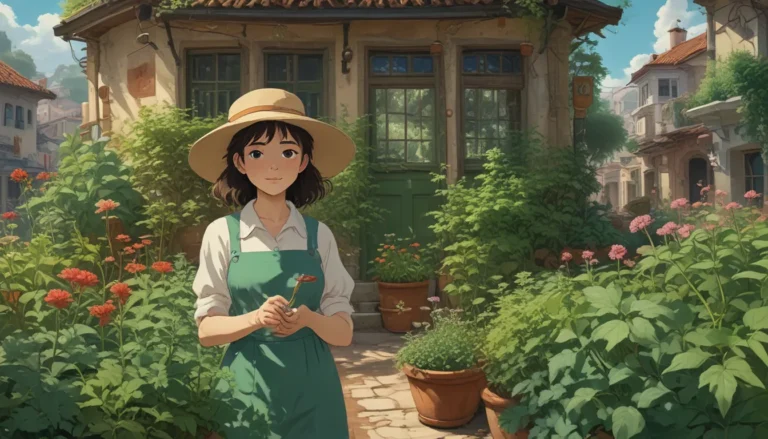A Comprehensive Guide to Growing and Caring for Sky Blue Aster Flowers

Sky Blue Aster flowers, scientifically known as Symphyotrichum oolentangiense, are a stunning addition to any outdoor garden. This native herbaceous perennial thrives in USDA Hardiness Zones 3 to 8, providing a burst of blue daisy-like flowers that bridge the gap between summer and fall. In this article, we will explore the cultivation, propagation, care, and maintenance of these beautiful flowers. Whether you are a seasoned gardener or a novice enthusiast, you’ll find valuable information on how to grow these vibrant blooms in your outdoor space.
Cultivation and History of Sky Blue Aster
Originally named by botanist John Leonard Riddell in 1835 as Aster oolentangiensis, this plant has a rich history that dates back to its discovery along the Olentangy River in Ohio. Over time, the plant has undergone changes in nomenclature, now known as Symphyotrichum oolentangiense. This renaming reflects the plant’s evolutionary history and reinstates its original geographic reference.
As an endangered species in New York, the sky blue aster is prized by native plant enthusiasts for its ecological importance. With its upright growth habit and vibrant blue flowers, it adds a touch of color to gardens and landscapes.
Propagation Methods for Sky Blue Aster
When it comes to propagating sky blue aster, there are several methods you can choose from:
From Seed
- Start seeds indoors about four weeks before the last average frost date in your area.
- Use seed-starter peat pots for minimal root disruption.
- Maintain a steady temperature of around 70°F for optimal germination.
- Transplant seedlings to the garden after the last frost or direct sow in a sunny location.
From Cuttings
- Take soft tip cuttings from mature plants in spring.
- Use rooting hormone to encourage root development.
- Transplant rooted cuttings into the garden once established.
From Divisions
- Divide existing plants in spring using a clean, sharp shovel.
- Transplant the divisions to other areas of the garden.
From Transplants
- Purchase mature plants or seedlings from a nursery.
- Transplant them into the garden as soon as possible.
Whether you choose to start from seed, cuttings, divisions, or transplants, sky blue aster offers a variety of propagation options for gardeners.
How to Grow Sky Blue Aster Flowers
Growing sky blue aster is relatively easy, provided you follow some key guidelines:
- Plant in full sun to light shade.
- Ensure well-draining soil with a pH range of 5.5 to 7.5.
- Water regularly, especially during dry periods.
- Avoid over-fertilizing, especially with vigorous native plants.
By following these simple steps, you can enjoy vibrant sky blue aster flowers that thrive in various garden settings.
Growing Tips for Healthy Sky Blue Aster Plants
To ensure the health and vitality of your sky blue aster plants, consider the following tips:
- Choose an appropriate location with adequate sunlight.
- Adjust soil pH based on soil test results.
- Provide consistent moisture during germination and growth.
- Water established plants if rainfall is insufficient.
- Transplant seedlings and nursery plants in the early morning for minimal stress.
By following these growing tips, you can nurture robust sky blue aster plants that bloom beautifully season after season.
Pruning and Maintenance of Sky Blue Aster
When it comes to pruning and maintenance, sky blue aster can be a low-maintenance plant with minimal fuss. Depending on your garden style and preferences, you can choose to:
- Prune plants in early summer to encourage compact growth.
- Deadhead spent blossoms to prevent self-sowing.
- Divide plants every few years to manage density and promote airflow.
Whether you prefer a hands-on or hands-off approach, sky blue aster offers flexibility in maintenance while adding charm to your garden.
Where to Buy Sky Blue Asters
If you’re looking to add sky blue aster to your garden or landscape, you can find seedlings and plants at local nurseries or online retailers. These versatile plants work well as mid-border fillers, providing habitat for beneficial insects and wildlife.
By incorporating sky blue aster into your garden, you can enhance its visual appeal and ecological value.
Managing Pests and Disease
While sky blue aster is generally resistant to pests and diseases, occasional issues such as powdery mildew or aster yellows may arise. By monitoring your plants regularly and taking prompt action, you can address these concerns effectively:
- Apply organic fungicides for powdery mildew.
- Prune affected areas to improve airflow and prevent disease spread.
- Use insecticidal soap for aster yellows transmitted by leafhoppers.
By staying vigilant and proactive, you can maintain healthy sky blue aster plants and minimize potential pest and disease problems.
Best Uses for Sky Blue Aster Flowers
Sky blue aster flowers have versatile applications in garden design and landscaping. Here are some creative ways to showcase their beauty and functionality:
- Plant along rustic paths, fences, and property perimeters.
- Use as middle-height anchors in garden beds to complement other plants.
- Interplant with various species for a vibrant butterfly meadow.
- Utilize for erosion control due to their rhizomatous root system.
- Incorporate in xeriscaping projects for low-maintenance landscapes.
With their adaptability and aesthetic appeal, sky blue aster flowers can enhance a variety of garden settings and serve multiple purposes.
Quick Reference Growing Guide for Sky Blue Aster Flowers
Here is a quick reference guide to help you grow and care for sky blue aster flowers effectively:
- Plant Type: Herbaceous perennial flowering plant
- Native to: Southeast Canada to northeast Mexico
- Hardiness (USDA Zone): 3-8
- Bloom Time / Season: Late summer to fall
- Exposure: Full sun to part shade
- Height: 24-36 inches
- Spread: 18-24 inches
- Water Needs: Dry to moderate
- Pests & Diseases: Aster yellows, powdery mildew
By referring to this concise guide, you can quickly access essential information about sky blue aster flowers and their cultivation requirements.
Conclusion
In conclusion, sky blue aster flowers are a delightful addition to any garden or landscape. With their striking blue blooms, ecological benefits, and versatile applications, these native perennials are a valuable asset to gardeners of all levels.
By following the guidelines outlined in this comprehensive guide, you can successfully grow and care for sky blue aster flowers in your outdoor living space. Whether you’re a novice gardener or an experienced enthusiast, sky blue aster offers aesthetic appeal, ecological value, and low-maintenance beauty that will enhance your outdoor environment.
So why not consider adding sky blue aster flowers to your garden today? With their colorful blooms, wildlife habitat benefits, and ease of care, they are sure to brighten up your landscape and bring joy to your gardening adventures.





